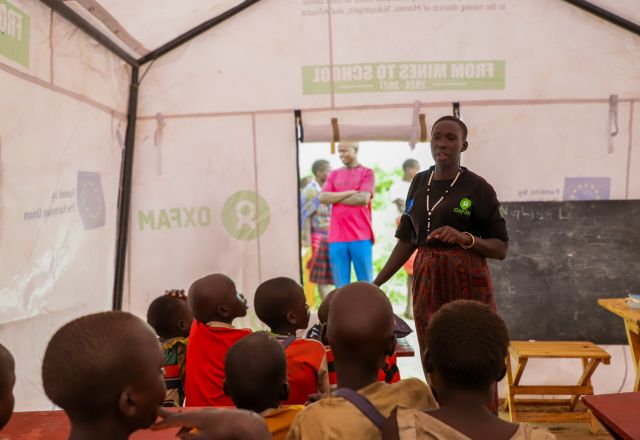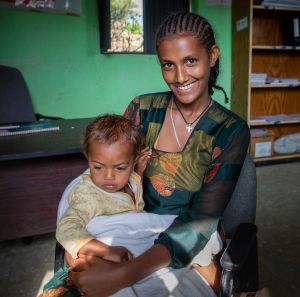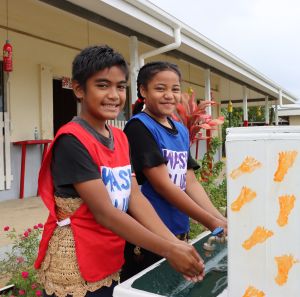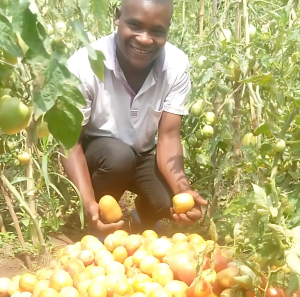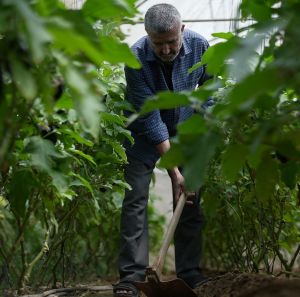Meet Mercy
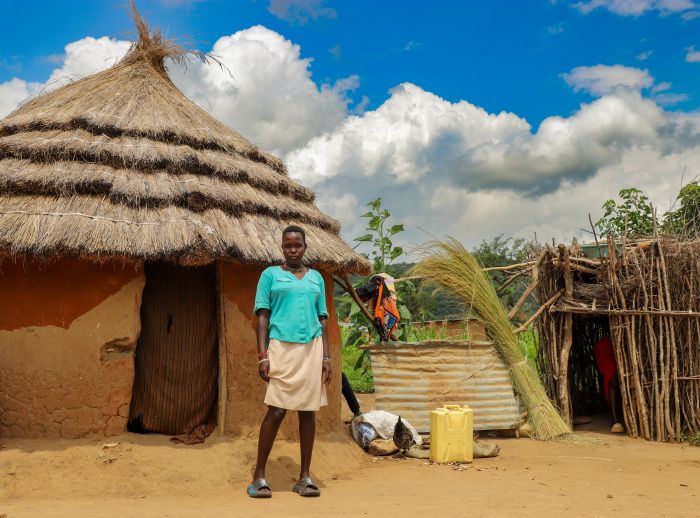
16-year-old Mercy stands in her old Croc slides in the dusty compound of the Utut mobile school. She wears a smile that often fades quickly, as if she's lost in deep thought. Around her, other children, some younger and a few older, shuffle in and out of class. When asked what her dream is, she says she wants to become a nurse.
“I want to complete school and help my family and others like the nurses at the health centre do. I, however, do not know if I will be able to finish school to become a nurse,” says Mercy Naok.
Just months ago, in January, Mercy’s days were spent at the gold mines. She sifted heaps of soil searching for tiny glimmers of gold. On a good day, she earned 5,000 shillings (approximately €1.23), barely enough to buy food. Her parents, worn out by years of mining, relied on her to help put food on the table.
With a mobile school in her community and increased community awareness about the dangers of child labour, Mercy seized the chance she had long yearned for to return to school despite her parents' hesitation. She convinced her mother that she would still provide for the family. She once attended mainstream school but had to drop out due to a lack of school fees and the pressure to work in the mines.
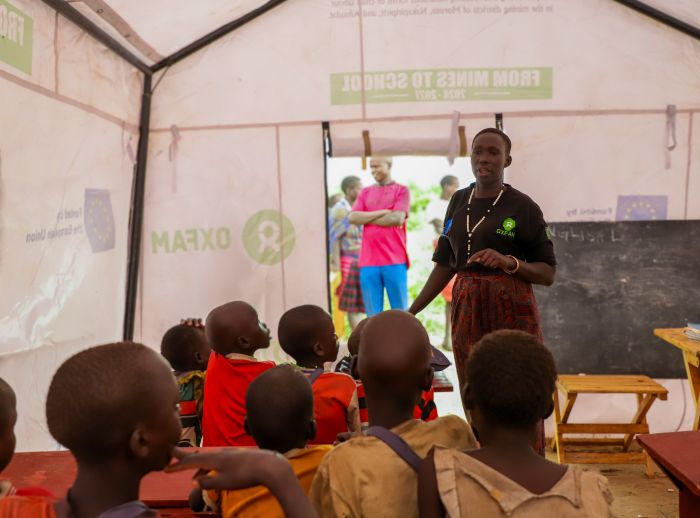
With a mobile school in her community and increased community awareness about the dangers of child labour, Mercy seized the chance she had long yearned for to return to school despite her parents' hesitation. She convinced her mother that she would still provide for the family. She once attended mainstream school but had to drop out due to a lack of school fees and the pressure to work in the mines.
Despite having another chance at education, the journey remains difficult. Hunger is a silent torture, no meals are provided at school, and at home, the only meal she can rely on comes late in the evening, if she can manage to provide it. Her routine until recently was attending classes until 1pm before rushing back to the mines in an attempt to earn a meal for the day.
“We close early because most of us are too hungry to focus.”— Mercy Naok, Utut mobile school student
From Mines to School project
Funded by the European Union through Oxfam Ireland, the “From Mines to School” project is implemented by Oxfam in Uganda, in partnership with Education Advocacy Network (EAN) and Resource Rights Africa (RRA). The initiative aims to get children out of hazardous labour in the gold mining districts of Moroto, Nakapiripirit, and Amudat and into accelerated learning.
The Accelerated Education Programme (AEP) condenses the primary curriculum into three levels. The goal of these schools is to help learners like Mercy, who have missed time in school, to catch up and sit their Primary Leaving Examinations (PLE) in record time.
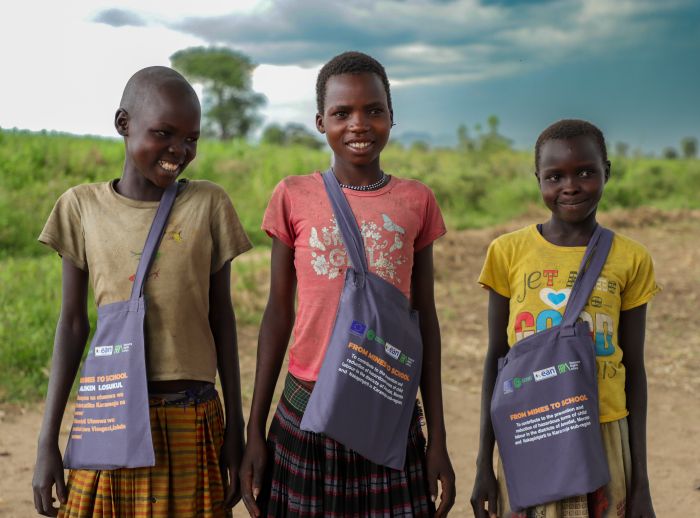
By early 2025, the project had successfully established six Accelerated Education Program (AEP) mobile schools in some of the region’s most challenging-to-reach mining areas, including:
- Nakapiripirit
- Naror,
- Utut.
- Amudat
- Kokwochaya,
- Nagwoliet.
- Moroto
- Napedo,
- Akwapua.
Mercy's future
The mines Mercy worked in were temporarily shut by the government, citing higher numbers and concerns about hygiene. She now must find casual work after school to try and provide her family with a day’s meal.
Mercy feels there is too much burden on her to support the family of five since her mother and father are suffering from severe back pain after long days of mining. She worries that this hinders her resolve to stay at school.
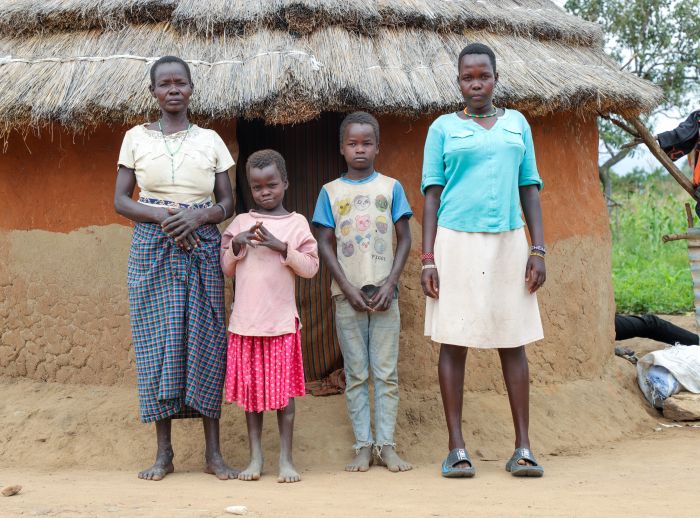
The mines Mercy worked in were temporarily shut by the government, citing higher numbers and concerns about hygiene. She now must find casual work after school to try and provide her family with a day’s meal.
Mercy feels there is too much burden on her to support the family of five since her mother and father are suffering from severe back pain after long days of mining. She worries that this hinders her resolve to stay at school.
As Mercy faces the harsh realities of hunger and family duties, the burden of her dreams becomes both her motivation to stay in school and a heavy weight, leading her to deep reflection. How can she concentrate on her studies when each day is a battle for survival?
Mercy’s journey is just one of many, echoing the collective struggle of 304 children, so far who have found a path from mines to school.
